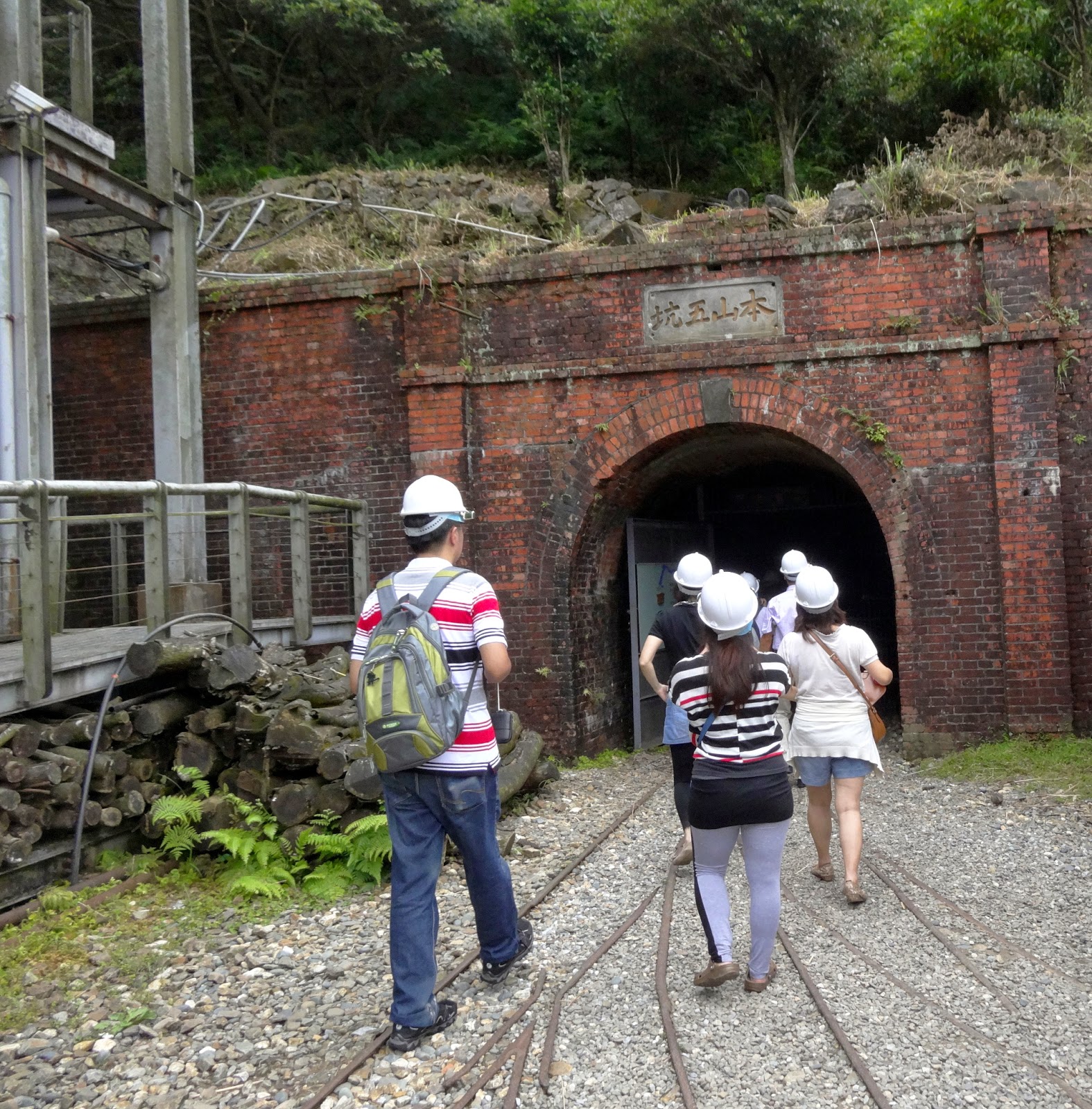A relic from the years of Japanese control, the Gold Ecological Park is named for its former gold mine and the protected mountain landscape surroundings.
 | |
| Guan Gong - once a Chinese general, now a god |
Small fees are requested for some of the attractions, such as the walking tour of the old mining tunnel. Before entering the tunnel everyone has to put on hard hats. In some areas the roof is low, so that even people of my vertically challenged proportions are in danger of hitting their heads.
Each time I enter mining tunnels I'm always humbled by the conditions and dangers miners endure, even in these days of high-technology mining.
I think the place my husband most enjoyed visiting was the derelict Shinto temple. It's a 10 to 15 minute climb up broken-down steps to reach it, but I agreed that it was worth the effort. There's an atmosphere about forsaken religious sites and religious buildings that's difficult to put into words.
Of course, I couldn't resist photographing some of the local flora and fauna.
There's too much to do at the Gold Ecological Park to cover it all in one day if you include walking the many hectares of mountain landscape. Some sights we failed to see (again) on our most recent visit were the Gold Waterfall, the Octagonal Pavilion, which was a head-shaving barber shop exclusive to the Japanese, and the Changren Tunnel No. 3 flue pipes, which criss cross the mountain like giant snakes.
My son also missed out on practising gold panning in the Gold Building because this only takes place at set times during the day. But he did have fun pretending to ride the stationary mining cart.
Kids and adults alike also enjoy touching the massive gold ingot on display in the Gold Building. Is it real? Surely not.
Easycards make using public transport in Taipei a doddle, and now their range has been extended to the rail network covering the surrounding areas. To travel to the Gold Ecological Park we caught the train to Jilong (Keelung) from Taipei Main Station, simply finding the train we needed and swiping our Easycards to get through the barriers. Catching the 788 bus to Jinguashi, which terminates at the park, was trickier because it leaves from the bus stop over the road and to the right of Jilong train station, not the most obvious bus stops to the left. You can also catch a train to Ruifang, and catch the bus further along its route there, but it's standing room only by the time the bus arrives in Ruifang, though the overall route is shorter. This is the way we returned to Taipei. The park publishes an English language brochure giving all the details.
How did we feel about our trip to the Gold Ecological Park? Sorry, I can't resist. It was golden.






No comments:
Post a Comment